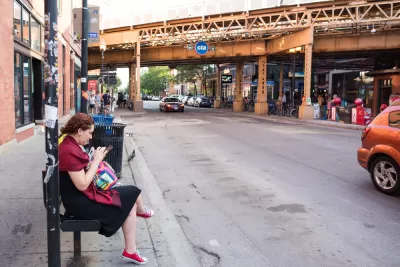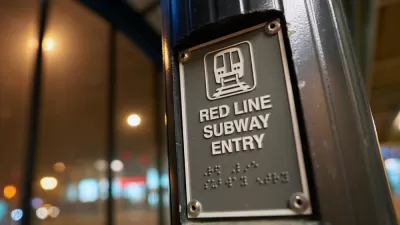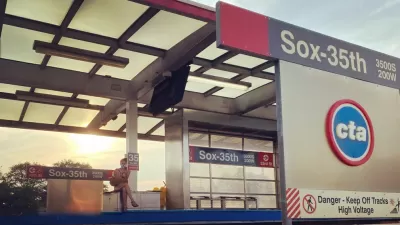A big approval and a significant delay—but otherwise 2020 has been a positive year for plans to extend the Chicago Transit Authority's Red Line by 5.6 miles to the south.

"The Chicago Transit Authority’s planned Red Line extension has made a 'significant' step toward securing about $1 billion in federal funds, the transit agency announced Monday," reports Stefano Esposito.
The $1 billion in necessary federal funding became a significant step closer to reality after the Federal Transit Administration gave preliminary approval for the extension that will add 5.6 miles to the Red Line, extending south of the Chicago city limits.
"The CTA now has two years to complete the next phase, which includes finalizing the project’s environmental impact statement and drawing up preliminary engineering documents," according to Esposito.
The step forward for the extension was cut with a step back, as Chicago Transit Authority officials announced that the timeline for the project's completion had been pushed back by three years, with an expected opening data now set for 2029.
Other than the delay, the extension's prospects are looking much more certain. Here's how a separate article by John Greenfield sums up the political dynamics influencing the project's future now:
Of course, even the 2029 start date assumes that the feds will come through with the $1 billion grant. But that possibility became a lot more likely with the election of Joe Biden, a noted rail fan. His appointment of former South Bend mayor Pete Buttigieg, who advocated for the extension of the South Shore Line commuter railroad into that city’s downtown, and rented a condo next door to the the [sic] Red Line’s Monroe station when he lived in Chicago in the late 2000s, probably won’t hurt either.
Planetizen last checked in with the plan in November 2020, after the release of the CTA's preferred plan for the extension's tracks and stations.
FULL STORY: CTA takes ‘significant’ step toward securing funding for Red Line extension

Study: Maui’s Plan to Convert Vacation Rentals to Long-Term Housing Could Cause Nearly $1 Billion Economic Loss
The plan would reduce visitor accommodation by 25,% resulting in 1,900 jobs lost.

North Texas Transit Leaders Tout Benefits of TOD for Growing Region
At a summit focused on transit-oriented development, policymakers discussed how North Texas’ expanded light rail system can serve as a tool for economic growth.

Using Old Oil and Gas Wells for Green Energy Storage
Penn State researchers have found that repurposing abandoned oil and gas wells for geothermal-assisted compressed-air energy storage can boost efficiency, reduce environmental risks, and support clean energy and job transitions.

Santa Barbara Could Build Housing on County Land
County supervisors moved forward a proposal to build workforce housing on two county-owned parcels.

San Mateo Formally Opposes Freeway Project
The city council will send a letter to Caltrans urging the agency to reconsider a plan to expand the 101 through the city of San Mateo.

A Bronx Community Fights to Have its Voice Heard
After organizing and giving input for decades, the community around the Kingsbridge Armory might actually see it redeveloped — and they want to continue to have a say in how it goes.
Urban Design for Planners 1: Software Tools
This six-course series explores essential urban design concepts using open source software and equips planners with the tools they need to participate fully in the urban design process.
Planning for Universal Design
Learn the tools for implementing Universal Design in planning regulations.
Ascent Environmental
Borough of Carlisle
Institute for Housing and Urban Development Studies (IHS)
City of Grandview
Harvard GSD Executive Education
Toledo-Lucas County Plan Commissions
Salt Lake City
NYU Wagner Graduate School of Public Service




























